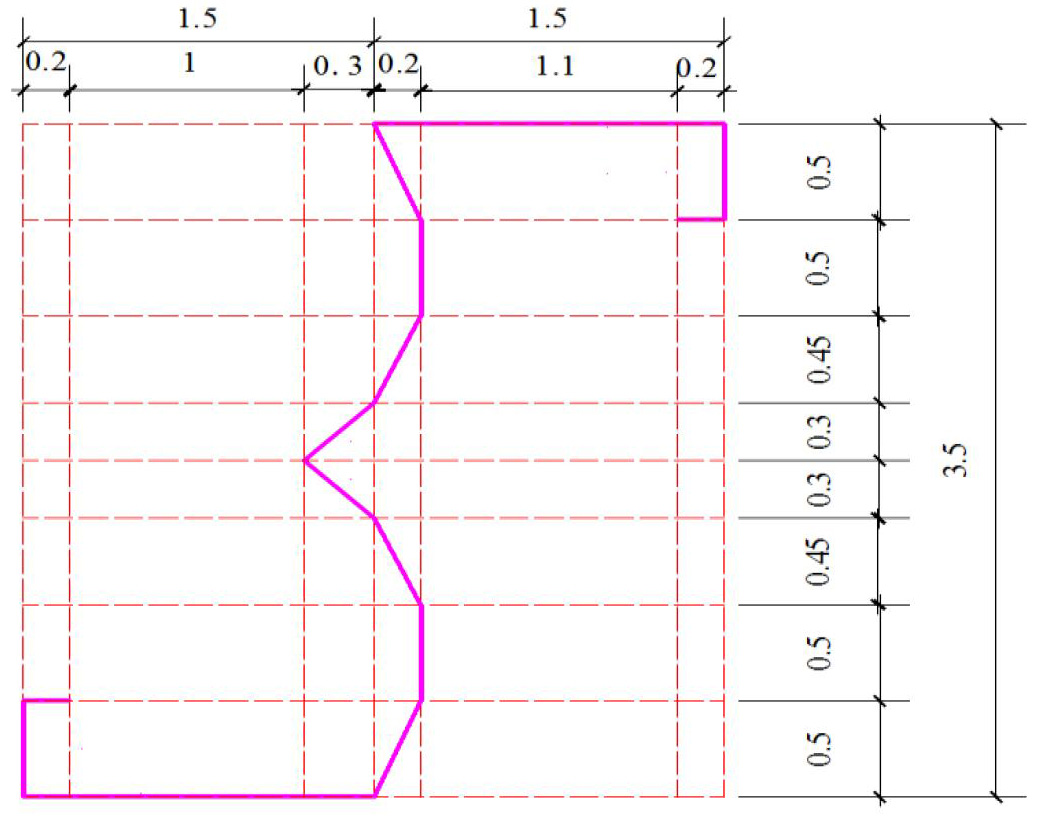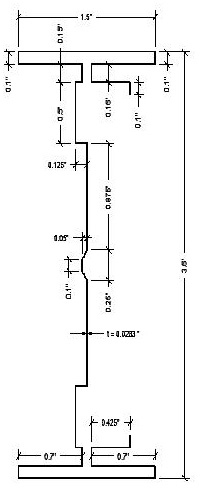2014 International Student Competition on Cold-Formed Steel Design
Official Website http://cfscompetition.unt.edu
Award Announcement
December 02, 2014
Results:
The 2014 Student Competition on Cold-Formed Steel Design received a total of 42 entries from 8 universities listed below.
- Chongqing University, China
- Chulalongkorn University, Thailand
- Drexel University, USA
- State University of Campinas, Brazil
- Tongji University, China
- University of North Texas, USA
- University of Waterloo, Canada
- Virginia Tech, USA
The judging panel carefully reviewed all entries and ranked them according to the design's efficiency and constructability as well as the quality of the essay.
The top 3 winners are the following:
|
Rank |
Student's Name |
School |
Cross-Section Shape |
Cross-Section Area |
Total Score |
|
1st |
Chris Willis |
University of North Texas |
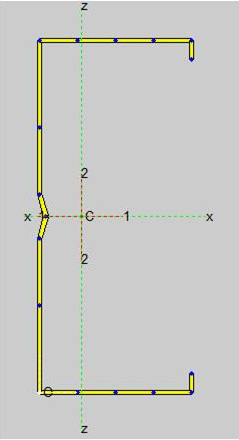
|
0.311 in^2 |
92.9 |
|
2nd |
Zongya Xu |
Tongji University |
|
0.287 in^2 |
90.7 |
|
3rd |
Benjamin Dow |
University of Waterloo |
|
0.319 in^2 |
72.1 |
The other top 10 students are:
| 4 | Chen Yang | Chongqing University |
| 5 | Dong Li | Chongqing University |
| 6 | Mohammadreza Moharrami Gargari | Virginia Tech |
| 7 | Alexssander S. Magalhães | State University of Campinas |
| 8 | Mehdi Janqorban | University of Waterloo |
| 9 | Rafaela Matiazzo Peixoto | State University of Campinas |
| 10 | Scott Guerin | Virginia Tech |
Awards:
- The top 3 students will received individual cash award in amount of $600, $400, $250 respectively.
- The top 3 students will receive individual award plaque by mail.
- All top 10 students will received a one-year CFSEI student membership ( www.cfsei.org ).
We sincerely appreciate the supports and advices from the sponsors and many individuals. We look forward to holding the competition again in 2015.
Original Announcement
2014 International Student Competition on Cold-Formed Steel Design
Official Website http://cfscompetition.unt.edu
March 24, 2014
Mission:
The mission of the International Student Competition on Cold-Formed Steel Design (CFS Design Competition) is to promote higher education in cold-formed steel structural design and to encourage students to use creative thinking skills to solve engineering problems.
After the successful 2013, 2012 and 2011 competitions, the 2014 Competition is hosted again at the University of North Teas. We encourage the participation of any students at any level in any major as long as you are creative, interested in designing things, and eager to learn new technologies.
Competition Organizer:
Cold-Formed Steel Engineers Institute, www.cfsei.org
Sponsors:
- National Science Foundation, www.nsf.gov
- American Iron and Steel Institute, www.steel.org
- American Society of Civil Engineers, www.asce.org
- University of North Texas, www.unt.edu
Eligibility:
The 2014 CFS Design Competition is open to all full-time students at any level. All student entrants are required to work on the problem individually, and no team solutions are accepted.
Judging Panel:
- Roger A. LaBoube, Ph.D., P.E., Distinguished Teaching Professor, Missouri University of Science and Technology, US.
- Rick Haws, P.E., NBS Group Services, A Nucor Company.
- Yuanqi Li, Ph.D., Professor, Tongji University, China.
- Yared Shifferaw Bayleyegn, Ph.D., Assistant Professor, Drexel University, US.
- Cheng Yu, Ph.D., Associate Professor, University of North Texas, US.
Schedule:
- September 30, 2014 Submission deadline. All submissions shall be received electrically before 6:00 pm at student entrant's local time.
- November 2014 Winners selected by the Judging Panel.
- December 2014 Winners announced.
- January 2015 Awards mailed to the winning students.
Awards:
- 1st place student will receive a $600 USD monetary award.
- 2nd place student will receive a $400 USD monetary award.
- 3rd place student will received a $250 USD monetary award.
- Each of the top 3 winning students will receive an Award Plaque.
- Each of the top 10 winning students will receive a one-year CFSEI student membership.
The winning designs will be recognized and exhibited at appropriate platforms such as professional conferences, websites and news letters.
The 2014 CFS Design Competition Problem:
Task
To design an optimal cross section shape for a 96-inch long cold-formed steel stud column which provides adequate compression strength and utilizes the least amount of material.
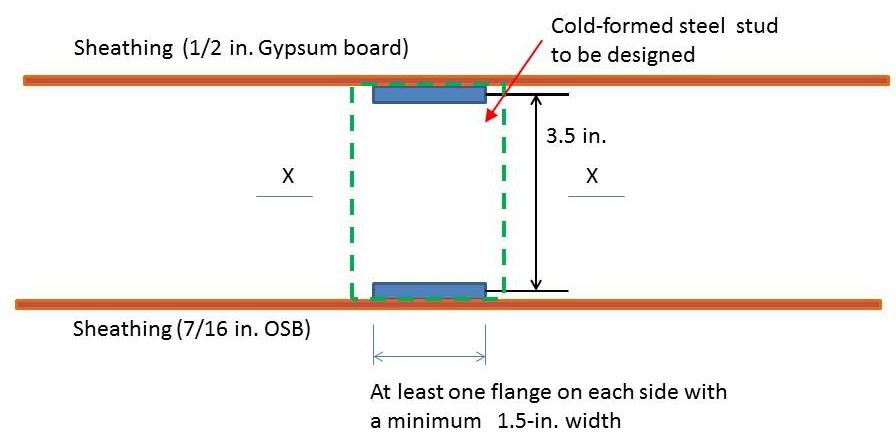
Figure 1
Requirements
1. The section shall have at least one bottom flange and one top flange with a minimum 1.5-inch (38.1-mm) width to accommodate screw-fastened sheathing attachments. The flanges shall be parallel to the X-X axis as illustrated in Figure 1.
2. The section should provide a minimum 12 kip (53.4 kN) nominal axial compression strength.
3. It is assumed that the sheathing attachments [Face 1: 7/16-in. OSB; Face 2: 1/2-in. gypsum board] provide both translational and rotational restraints to the flanges. The restraint stiffness values (as foundation stiffness) are listed in Figure 2.
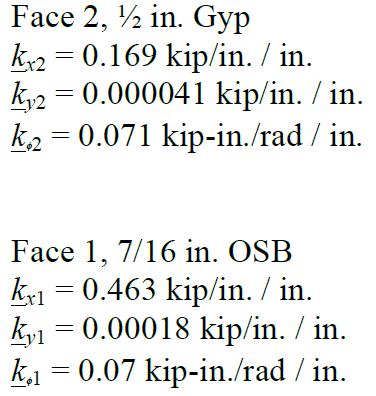
Figure 2
4. The member shall have uniform thickness, and the steel properties are defined as: Elastic modulus E=29500 ksi (203.4 GPa), Possion's ratio v=0.3, material's yield stress Fy=50 ksi (344.7 MPa). The steel's thickness shall be picked from the following Table 1.
Table 1
|
Steel's Design Thickness |
|
0.0188 in. (0.4775 mm) |
|
0.0283 in. (0.7188 mm) |
|
0.0312 in. (0.7925 mm) |
|
0.0346 in. (0.8788 mm) |
|
0.0451 in. (1.1455 mm) |
|
0.0566 in. (1.4376 mm) |
|
0.0713 in. (1.8110 mm) |
|
0.1017 in. (2.5832 mm) |
|
0.1242 in. (3.1547 mm) |
5. Sharp corners (zero radius) can be assumed in design.
6. The distance between the center lines of the two flanges shall be 3.5 inches (88.9 mm).
7. AISI S100-12 "North American Specification for the Design of Cold-Formed Steel Structural Members, 2012 Edition" shall be used for determining the nominal axial strength.
8. Constrained Finite Strip Analysis (cFSM in CUFSM software) shall be used for the elastic buckling analysis. The critical elastic local and distortional buckling loads are defined as the minimum elastic buckling loads on the signature curve for the half-wave length range between 1 and 96 inches.
9. Students shall submit the design individually; team work will not be accepted.
Tool
An open source software CUFSM is available for performing the elastic buckling analysis. CUFSM can be downloaded here. More information about the software can be found in this link.
The Direct Strength Method provisions can be found in the Appendix 1 of the AISI S100 North American Specification for Cold-Formed Steel Structural Members. AISI permits the students to download the AISI S100 Appendix 1 for use in this competition only, link.
A detailed design example is provided here, the Direct Strength Method procedure can be found in this document.
Design Package and Submission Info
The design package (zipped in one file) must be submitted via email to cfscompetition@gmail.com by 6:00pm on September 30, 2014, at student' local time.
The design package shall include three documents:
- Completed the Information Form. The form can be downloaded here.
- A design essay (in Word or PDF).
- The CUFSM result file ( .mat file).
The design package (3 documents) shall be zipped to one single .zip or .rar file, and then emailed to the above address. The name of the single file shall be in the format: first name_last name.zip or first name_last name.rar.
Requirement for Design Essay
A brief essay (in English), limited to maximum 5 letter-size pages, is required as part of the design package. The essay shall describe the concept of the design, the methodology used for optimization, and the detailed calculation of the nominal flexural strength.
Evaluation Criteria:
- The total score of a valid design consists of two parts: 80% for Efficiency, 20% for Feasibility.
-
The Efficiency refers to the cross-section area (material usage). A more efficient design has smaller cross-section area. The rank for Efficiency will be based on the cross-section area only.
-
The Feasibility refers to how easy it is to manufacture the section. A more feasible section has less folding lines, requires less or no welding, etc. The rank for Feasibility will be decided by the judges.
-
The score in each category will be based on the ranking. For instance the 1st place in Efficiency will gain 80 points, the last place will gain 0 point, the score will be uniformly distributed in between.
Q and A:
1. The CUFSM only takes two decimals for coordinate inputs but my design has many small elements which need at least four decimals for the node coordinates.
Solution: Use '1/100 inch' as the length unit so that you can adopt more decimals for the coordinates. Here is an example.
What is Cold-Formed Steel?
Cold-formed steel - Wikipedia. http://en.wikipedia.org/wiki/Cold_formed_steel
CCFSS Cold-Formed Steel for Students. http://www.ccfssonline.org/Student/Student.html
For More Information:
Additional questions on the competition subject, CUFSM software, and submissions should be addressed to:
Cheng Yu, Associate Professor
University of North Texas
3940 E. Elm St., Suite F115
Denton, TX 76207
Tel: 940.565.2022
Fax: 940.565.2666
e-mail: Cheng.Yu@unt.edu
Acknowledgment:
The Competition organizer would like to thank the Sponsors for their financial supports. The Competition is partially funded by the National Science Foundation through a CAREER award (NSF CMMI #0955189). The momentary awards for 2014 Competition are provided by the American Iron and Steel Institute. Any opinions, findings, and conclusions or recommendations expressed in this Competition do not necessarily reflect the views of the sponsors.
The 2014 competition problem was designed by the Judging Panel, their technical advises to this event is greatly appreciated. Special thanks go to Dr. Ben Schafer at the Johns Hopkins University who provided the CUFSM software for this event.
The Competition could not be successful without the promotion and support by the following organizations:
- Cold-Formed Steel Engineers Insitute,
- American Iron and Steel Institute, Education Committee,
- American Society of Civil Engineers, Cold-Formed Member Committee,
- Structural Stability Research Council, Thin-Walled Structures Task Group.





